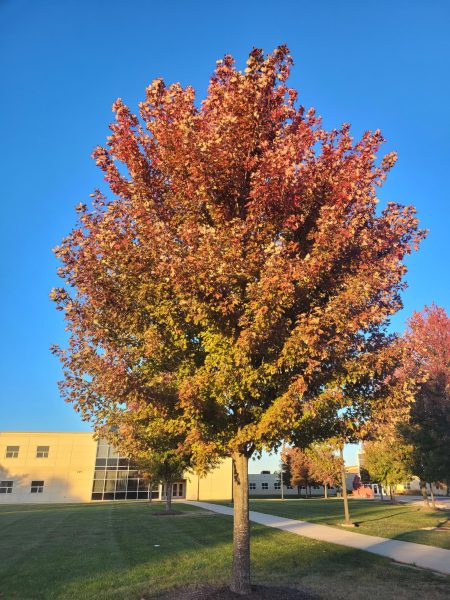As autumn returns, the beauty of the fall colors falling from the trees hints it is that time of year. The yellow, red, purple, orange and brown are a perfect sight all around.
As the time of day shortens and the temperature cools, the process of leaves starts to change.
According to SUNY ESF, “In the fall, because of changes in the length of daylight and changes in temperature, the leaves stop their food-making process. The chlorophyll breaks down, the green color disappears, and the yellow to orange colors become visible and give the leaves part of their fall splendor.”
During the autumn season, the sun starts to hide, which leads to the leaves falling on the ground.
According to Forestry and Land Scotland, “In autumn, with the cooler temperatures and shorter days, the production of one hormone called auxin reduces. This in turn puts a strain on the abscission layer and causes the bond between leaf and branch to weaken. Eventually, the strength of the joint is weakened enough that the wind will blow the leaf away.”
It is that time of year when grabbing the rake out of the garage has become a weekly habit of which nobody may be a fan. Don’t just throw the leaves away; create activities with friends and family that boost the fall experience.
According to Califf Creations, “Fall leaves are magical for so many reasons. There is something about a big pile of leaves that is irresistible to kids. They can bring out the kid in adults and always spell fun. There are so many learning opportunities for both kid’s bodies and minds hidden within this addictive fall play. Sure, kids will get dirty, but isn’t that what bathes are for, right?”
As the weather starts to change, so does the amount of leaves on the ground. The colors start to fade and the weather starts to freeze up with snow covering autumn’s leftovers, saying goodbye.
According to Strobert Tree Services, “The end of the leaf-falling season is as variable as its start, generally concluding by late November or early December in most temperate regions. However, this process can extend into the winter months in areas with milder climates or specific tree species that retain their leaves longer.”






